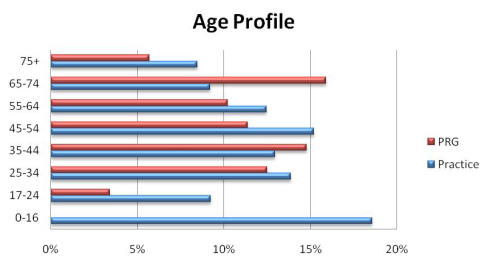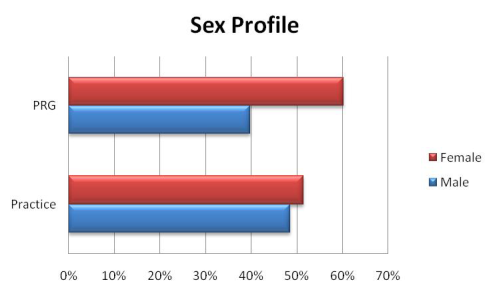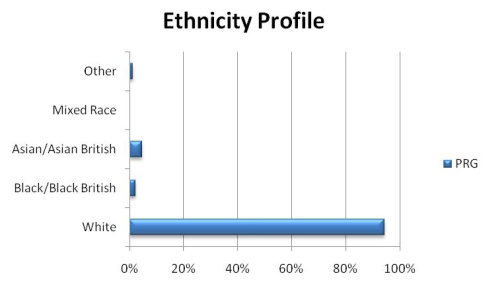Key Objectives
In April 2011, GP Practices were encouraged to set up a Patient Representative Group through the Patient Participation Enhanced Service. The purpose this Enhanced Service is to ensure that patients are involved in decisions about the range and quality of services provided and, over time, commissioned by their practice. It aims to encourage and reward GP Practices for routinely asking for and acting on the views of their patients. This includes patients being involved in decisions that lead to changes to the services their practice provides or commissions, either directly or in its capacity as gatekeeper to other services. The Enhanced Service aims to promote the proactive engagement of patients through the use of effective Patient Reference Groups (PRGs) and to seek views from practice patients through the use of a local practice survey. The outcomes of the engagement and the views of patients are to be published on the practice website.
Establishing A PRG At Caritas GP Partnership
The management of Caritas GP Partnership is carried out jointly by the Partners and the Business Manager, Tanya Humphreys. However, patients are registered with one Practice and each Practice operates a different appointment system, e.g. Dial House Medical Centre offers an open surgery every morning, whereas Ellesmere Medical Centre has a triage system in place to deal with any urgent queries. Furthermore, the Practices are placed in different areas of Stockport so their Practice population is also considerably different.
After much consideration, it was decided that separating the responses from patients at each Practice would allow us to identify differences in patient satisfaction between the two Practices and would enable us to focus on issues that were specific to each Practice. Therefore, we effectively set up and ran a PRG for each Practice.
This is the 2011/2012 Patient Representative Group Report for Caritas GP Partnership, which summarises the development and outcomes of the PRGs at Dial House Medical Centre and Ellesmere Medical Centre.
The following section focuses on Dial House Medical Centre. All the information regarding Ellesmere Medical Centre can be found in www.ellesmeremedicalcentre.co.uk
Dial House Medical Centre
1. Development of our PRG
On 1 May 2011, we started recruiting patients. We created some posters and leaflets with details on what a PRG is, including a Q&A section. We then produced a form patients could fill in if they were interested in joining the PRG. These were available in reception, on the website and in the doctors' rooms. Efforts were made by all practice staff to engage as many patients as possible. We also advertised our PRG on the Practice website and in the September issue of our quarterly newsletter.
As patients joined the PRG, we added their details to our PRG database. We monitored how representative our group was on a monthly basis and accordingly with our findings, we targeted the groups that had low or no representation.
2. Profile
The graphs below show the age, sex and ethnicity profile of our PRG compared to our Practice population.

The above chart shows that the PRG distribution is fairly consistent with our Practice population. Nonetheless, the percentage of PRG members in the 17-24 age range is slightly below our expectations. We actively approached patients in this category and invited them to join the Group but a significant proportion of them were reticent. We will continue to focus on this category with a view to increase their representation.
The male/female ratio of our Practice population is even. However, the male representation in our PRG is significantly below the female representation. We identified this as an issue shortly after we started recruiting members and even though we proactively targeted male patients, the female representation is still predominant. We will continue to encourage male patients to join our Group.

The data we hold on ethnicity is incomplete and cannot be used for comparison purposes. The chart below shows that most of the respondents are white British (94.32%), which we believe to be a fair representation of our practice population.

We targeted housebound patients as a group particularly difficult to engage with, as interaction with these patients is obviously limited. A search was performed to identify our housebound patients. These patients were then telephoned and the concept of the PRG was explained to them by a staff member. Patients who found this difficult to understand were followed up by a letter. As a final step to ensure we had made the best possible efforts, a staff member went out to visit housebound patients and as a result of these steps, we have recruited 9 patients.
3. Practice survey
We created a comprehensive questionnaire and sent it out to the PRG members both by email and by post, asking for input on any amendments/additions.
Once we had received feedback from our PRG members we made the relevant alterations and made the amended questionnaire available both at the Practice and on our website. The questionnaires were handed out to patients during open surgery. We also invited patients to join our PRG and fill in a questionnaire in the February issue of our Newsletter.
In total, we received 234 completed questionnaires.
On receipt of the completed questionnaires we collated the results in an easy to follow pie chart formula and sent this out to our PRG members, giving them the opportunity for comment and to give their opinions on how we should move forward with this information.
The results of our survey show that some of our patients are not completely aware of our opening hours. Our PRG had also noted this and suggested that we make our opening hours more prominent, both in the surgery and on our website. As a result of this suggestion, we have displayed colourful posters with our opening hours in the waiting room and the reception area. Our opening hours are also available on our website and on the NHS Choices website.
Full details of all questions included in our survey and the final results were forwarded to all our PRG members and can be found in the embedded document below:
Dial House Patient Survey Report (PDF, 193KB)
Next, we wrote the following action plan:
DH Full Action Plan (PDF, 77KB)
Finally, we sent it to all our PRG members asking them to comment and make suggestions on the following actions:
- To make our opening hours more prominent in the Practice.
- To have a dedicated phone line, which patients can ring to get results from 2 pm.
- We are going to make patients more aware of the Open Surgery.
- We are going to make sure that our clinicians code patients who do not attend their appointments so that this can be published at the Practice and on our website, with views to increase awareness of the amount of appointments wasted every month. We are hoping this will result in a reduction of missed appointments and a consequent increase in appointment availability.
We received 6 responses with the comments below. Alongside these comments we have included our response and the actions we will take.
- Most of the respondents thought that making the opening hours more prominent was a positive move. One of the members highlighted that the notices in our reception area and waiting room could be rearranged in such a manner, as to achieve a more effective method of communicating with our patients. Another member pointed out that as some of our patients might not have access to our website, it is paramount that the opening hours are displayed in the Practice as well as on-line. We really appreciate these constructive comments and we will endeavour to implement these suggestions with immediate effect.
- We have received excellent feedback regarding our proposal to have a dedicated phone line for results from 2pm. Nonetheless, one member highlighted that 2pm was not a suitable time for her. We would like to clarify that patients would be able to access their results from 2pm until close of business.
- A third of the respondents thought that we were giving a mixed message with regard to our appointment availability. At this moment in time, patients who need to be seen urgently can be seen on that same day in the Open Surgery. Those who have an ongoing health issue or a non-urgent complaint may have to wait slightly longer. For reasons beyond our control, we are currently experiencing a high demand for routine appointments, which is being closely monitored by the Practice. We expect this to rectify itself in the next few weeks as historically this has been the case with the improvement of the weather.
- No comments were made on our proposal to address the issue of patients who fail to attend their appointments so we assume that our PRG members are in agreement.
- 50% of the respondents congratulated us on our excellent work and the outstanding service we provide to our patients.
4. Practice opening hours
Monday 8.30am to 6.00pm
Tuesday 8.30am to 6.00pm
Wednesday 7.00am to 1.30pm
Thursday 8.30am to 6.00pm
Friday 8.30am to 6.00pm
One Saturday per month 9.00am to 11.00am
Appointments may be booked in person or by telephone.
The surgery is open on Wednesdays from 7am to 8am for patients who work. Both Dr Lund and Dr Gill are available at that time as well as a Practice Nurse and a Health Care Assistant.
Dr Whittaker is available between 9am and 11am one Saturday every month.